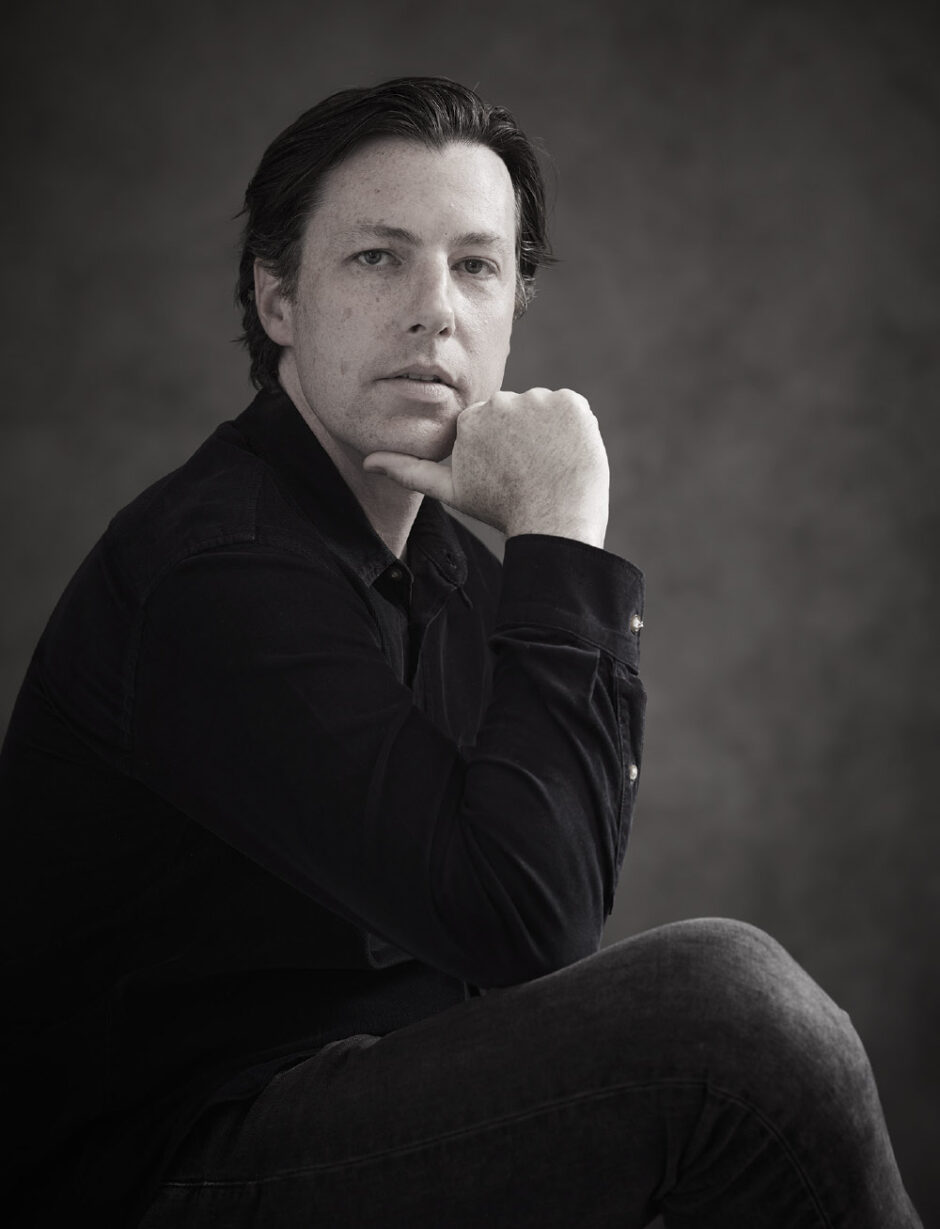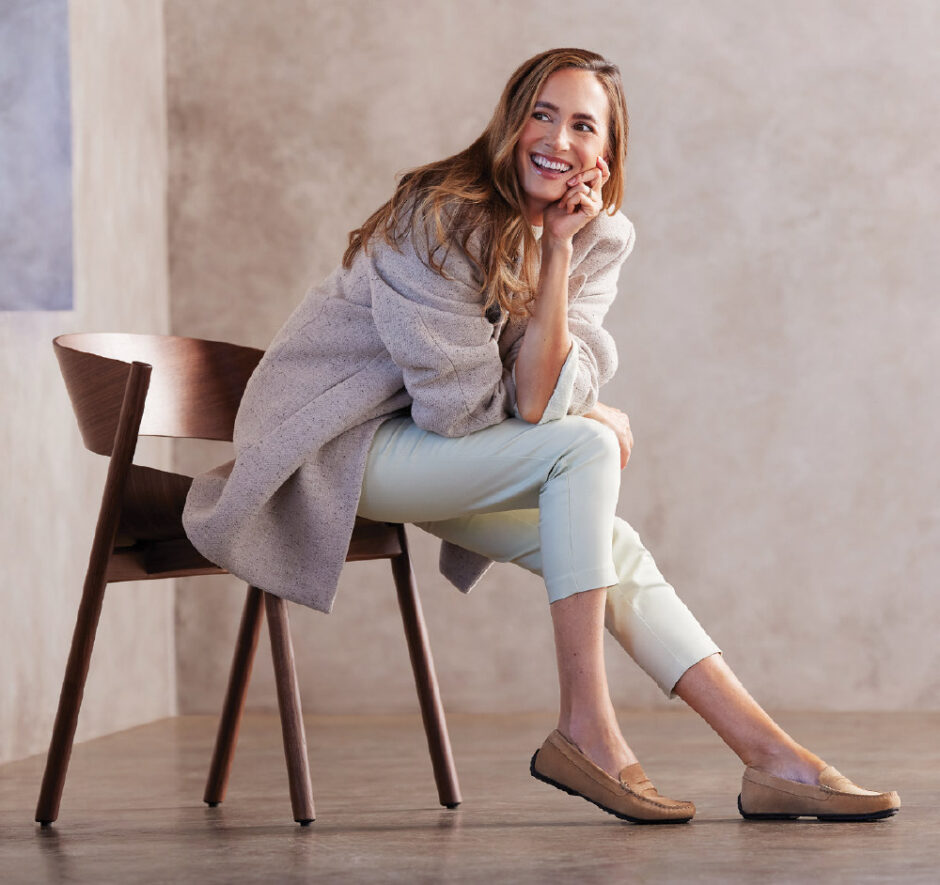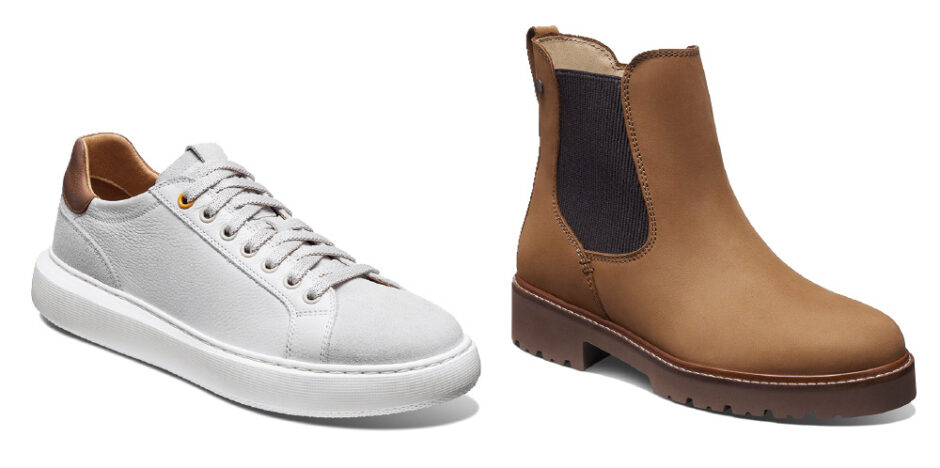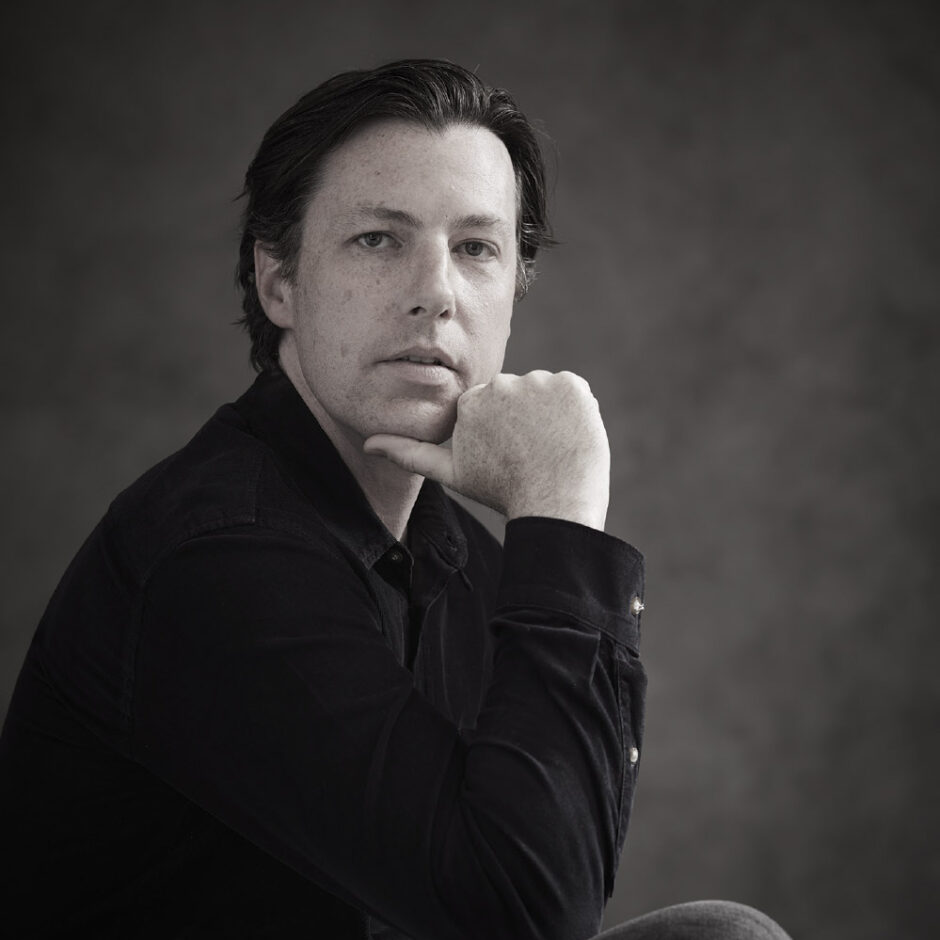 It was sudden. It was shocking. The passing of Samuel Hubbard founder Bruce Katz in June of last year, following a fall in his home, could have spelled the end of the premium comfort brand. Katz, for all intents and purposes, was Samuel Hubbard, the company he founded in 2014 and which marked his triumphant reentry into the footwear industry decades after he cofounded The Rockport Company with his father. Katz, a third-generation shoemaker, was an industry legend. He was a visionary entrepreneur, a category creator (fitness walking), a marketing maverick, and, perhaps above all, a product genius whose resume includes Rockport’s iconic RocSport and Pro Walker styles.
It was sudden. It was shocking. The passing of Samuel Hubbard founder Bruce Katz in June of last year, following a fall in his home, could have spelled the end of the premium comfort brand. Katz, for all intents and purposes, was Samuel Hubbard, the company he founded in 2014 and which marked his triumphant reentry into the footwear industry decades after he cofounded The Rockport Company with his father. Katz, a third-generation shoemaker, was an industry legend. He was a visionary entrepreneur, a category creator (fitness walking), a marketing maverick, and, perhaps above all, a product genius whose resume includes Rockport’s iconic RocSport and Pro Walker styles.
Katz possessed boundless enthusiasm for launching companies from the soles up, including The Well, an online community, and The Republic of Tea, makers and sellers of more than 350 varieties, during his 25-year shoe industry hiatus. He innovated, broke industry norms, inspired thousands, sailed around the world, and succeeded enormously. Few would have been surprised if the company had packed it in with his passing.
Not so fast. Katz had a knack for attracting people with a similar entrepreneurial spirit. They are dreamers, passionate about the company and filled with can-do spirit. They don’t cower in the face of adversity. Katz encouraged them to get involved in all aspects of the business, if so inclined. As a result, many are as experienced as they are talented. Above all, they have deep ownership stakes in Samuel Hubbard, just like Katz did. They weren’t willing to pack it in. Nor would Katz have wanted them to.
Take CEO Noah Wheeler, for example. The exec joined Samuel Hubbard in early 2016 as Controller. The previous year, Wheeler had been working for an accounting firm in San Francisco and was assigned to help Katz manage his personal finances. The shoe guru took a liking to Wheeler, so he offered him the position and, equally enticing, the opportunity to join his fast-growing start-up.
“I didn’t know anything about shoes at the time, but the company wasn’t your average start-up [Katz was a known industry leader with solid funding], and in getting to know Bruce, I thought he was a really good person and what he was building seemed very exciting,” Wheeler says. “So I just went for it. It was an exciting opportunity to get in on the ground and grow with the company. Plus, I didn’t want to work in tech; I liked the idea of working with consumer products—something real.”
Wheeler has done just that. In early 2018, he was promoted to Vice President of Finance and then, in January of 2022, to CEO. Along the way, he got his hands in a lot of different buckets. “That’s one of the things that was so great about Bruce,” he says. “I got to learn about all the different aspects of the business, including marketing, technology, finance, and product.” It’s been a wild ride, Wheeler adds. “Early on, there was a lot of fast growth, because Bruce knew exactly what he wanted to do and wasn’t hindered by financing,” he says. “We invested millions in marketing to get our brand out there, which included print advertising and catalogs, digital advertising, building up our marketing team, and multi-channel distribution. To be a part of all that has been really fun.”
Wheeler’s extensive experience helped prepare him for the enormous shock that was to come, as did the fact that he already had six months under his belt as CEO. Nonetheless, Katz was still very involved in the company, especially on the design and product sides, so when he passed, the company faced a crisis. “Initially, the biggest challenge was all of us grieving the loss of Bruce. We’re a small company, and he was just so near and dear to all of us, and his presence was huge,” Wheeler says. “Our next biggest challenge was to fill in the gaps of what he was doing in design and development.”
Fortunately, the industry came through with numerous offers to help Samuel Hubbard in its hour of need. During the brand’s first post-pandemic show last August in Atlanta, Wheeler was touched by the outpouring of support. “We had so many retailers and brand execs come to offer their condolences and support,” he says. “They were excited to see us. I felt like everybody was—and still is—rooting for us.” That includes direct competitors, which may seem surprising, but not to Wheeler. “The one thing I’ve learned about the shoe business is it’s pretty small, relatively. So there’s this overall attitude that we’re all in this together.”
One person in particular has been a lifeline for Samuel Hubbard: Bob Infantino, a close friend of Katz and former CEO of Clarks Companies, N.A. and, more recently, headed The Rockport Company. Infantino, who had consulted on women’s product for Samuel Hubbard in 2018, immediately reached out to Wheeler. This led to a series of conversations during which Infantino offered advice. A few weeks later, he joined the company as a strategic advisor, focusing on product development. Then, early this year, Infantino helped bring in former Clarks colleagues Steve Mahoney, as senior vice president of sales, and Sally Murphy to head design. “I’m just so grateful to have Bob on board,” Wheeler says. “His product experience coupled with Steve’s focus on rebuilding our retail channels and Sally designing our fall line, which includes our new women’s launch, have been huge. But none of this would have happened without Bob first coming forward to offer his help to get us through this difficult period.” Wheeler is confident the new team will lead Samuel Hubbard to much greater heights. “With our product and sales teams now in place, I’m surrounded by all-stars,” he says.
The team has come out swinging. Wheeler reports that Samuel Hubbard is up, year-over-year, in both its wholesale and DTC channels. “We’re persevering and, honestly, we’re stronger than ever,” he says. One of the biggest avenues of growth, he says, is the reestablishment of wholesale relationships as well as opening some new accounts. “Now our eyes are on fall. We’re offering more new styles for this season than we’ve had before and women’s, in particular, presents a huge opportunity for us. Overall, we’re really optimistic heading into the second half of this year.”
To be up for the year in spite of a challenging environment for the entire industry is impressive. To be up for the year just after losing the heart and soul of the company takes this story to another level. Still, Wheeler isn’t surprised by the company’s ability to absorb the blow and move forward. Rather, he feels a huge sense of accomplishment in the face of extreme and sudden challenges. It gives him confidence about the company’s future. “Every day, every quarter, and every year are going to be challenging,” he says. “Trying to build a brand is never a sure thing, so this accomplishment is just more motivation that we can survive going into another season.”
What are the biggest growth opportunities for Samuel Hubbard going forward?
First off, we’re going to stick to our roots of offering the most comfortable, premium footwear for men and women. That said, the biggest opportunity for growth is definitely on the women’s side. With men’s, it’s just continuing to make sure that we’re filling all aspects of his wardrobe. A lot of brands, including us, went really casual during and post-Covid, but now we’re seeing a resurgence of dress and hybrid dress-comfort shoes. So we’re going to continue to make sure we are fulfilling every need in his closet. Retail distribution is going to be key for us to growing the brand over the next few years, as well. For starters, not everybody wants to buy shoes online. I do not believe stores will dry up entirely. We’re going through a massive reorganization—more of an evolution, really—of what retail will look like, so we must continue to be a part of that evolution and make sure that we’re meeting all of our customers, wherever they’re shopping, be that at local mom and pop shops, Zappos, Nordstrom, or on our site. We’ve got to make sure that we’re in all those key places and that our brand experience is congruent throughout all those channels. It’s a big challenge, but it’s also a big opportunity.

You noted an emphasis on reestablishing as well as opening new wholesale accounts. Does that mark a shift from the company’s more recent focus on DTC?
First, I don’t think we ever intentionally turned our backs on our wholesale business, but I do think we lacked a consistent strategy over the years. Secondly, I think that for our brand, just like many other brands, the DTC business can be very deceptive. On the one hand, the margins are big and you’re dealing with customers directly, so there has been this notion that some wholesale channels are competing with our DTC. But that is just the most incorrect way to think about it. Our new approach is to not see them as separate channels. It’s all about growing our brand in these channels together. So we’re now approaching these wholesale partnerships as the opposite of competing with our DTC channel. We view our retail partnerships moving forward as helping to strengthen all the channels. At the end of the day, we need to get shoes on people’s feet, and we want to spread awareness of our brand and keep our customers happy. As long as we’re partnering with retailers who share that philosophy and want to work with us to present the brand in the right way and offer the right customer service, then that’s going to help all our businesses grow.
Most retailers are resigned to brands’ DTC efforts, but having to compete on price and, worse, potentially coming across like the bad guy with their customers is what really—and rightfully—ticks them off. They can lose a customer forever over such a scenario.
A lot of it comes down to communication, and that’s what we’re working really hard on now. For example, if we put anything on our site on closeout or a markdown, we let our retailers know in advance. We’ll also offer margin assistance on their remaining stock and will work with them to make sure that they sell through their inventory. It’s about making sure we’re being fair and extra-communicative with anything that can impact our retailers. On that note, we believe there’s a huge opportunity for us to compete for shelf space, not just in regard to having better product but also on the service that we offer our retail partners. And that includes being fair and honest, paying attention to their needs, making sure that they have good margins, maintaining MAP, making sure our product is up to date, creating marketing programs that drive customers into their stores…just making sure we’re doing everything in our power to help them succeed. That we’re going above and beyond to make sure that we are all succeeding.
Even Nike has seemed to pull back on its DTC focus of late. Perhaps brands aren’t better off trying to go it entirely alone.
Exactly. I think a lot of brands are realizing that. In hindsight, it was foolish for them to turn their back on brick-and-mortar partners. I don’t know what they were thinking. That, in three years, 90 percent of consumers would be buying shoes strictly online? It’s not happening. But now it’s about who’s going to actually walk the walk. Are they going to actually implement the right policies and philosophies to actually partner with retailers in the way that’s needed to be successful? Also, will they stand by them? I guess we’ll find out.
Still, numerous retailers have been receiving Dear John letters of late from brands announcing the end of their partnership without much explanation other than the decision to move in another direction.
That’s insanity! It’s also a great example of not meeting all your customers where they’re shopping. In addition, it’s continuing this fallacy that the business will come straight to your DTC if you cut out other channels. That’s really, really rare. Even DTC brands that started online have been opening stores.
How is the new women’s collection different than previous efforts by Samuel Hubbard?
Our initial efforts basically involved designing women’s versions of our men’s styles. That works for some silhouettes and patterns, but it’s not a winning approach overall. Right now, we’re trying to find who our women’s customer is. Some of that involves experimentation and releasing a range of styles. So over the next couple of seasons, we’ll be trying different things to see what gains traction. That said, overall, she’s going to be very similar to our men’s customer, which is a 35-plus person who lives an active lifestyle and is looking for superior quality and comfort.
 You basically described what 30 other comfort brands would have.
You basically described what 30 other comfort brands would have.
I know! (Laughs) We’re just going to have to do it better—just like we’ve done in men’s. We’ve proven to those loyal customers that our shoes are simply better. They’re more comfortable, supportive, longer-lasting, and better crafted. Now we’ve got to prove that to our future women’s customers. The difference there, though, is we have to be slightly more on-trend. While we’re going to stay rooted in classics, we’ve got to push a little bit more on making sure we’re on-trend in colors, materials, etc. And just like with the men’s closet, we need to make sure we’re meeting all her wardrobe needs, whether is just a versatile dress-up/dress-down clog, like we’re working on for early next spring, or classic boots made in the Hubbard fashion of being super lightweight, comfortable, and supportive.
Might the brand have more receptiveness to women because it’s largely unknown among that demographic?
It could be an advantage. We’ll see. I know Steve and I are super-excited to show the collection this month in Atlanta. The feedback, so far, has been really positive. Just like all brands, though, you put all the elements together and tie a bow on it and then wait to see what people like and what sells. We’re holding our breath in anticipation.
At the same time, might there be an advantage that Samuel Hubbard isn’t entirely new?
Yes, we’re lucky to have built-in retailers that are just waiting for our women’s shoes. They’ve been very receptive. Moving forward, we’re also making sure to get feedback from select retailers during our development phase. Bob and Steve have been showing select Spring ’24 styles to trusted partners to help us land on the final line-up. We did this somewhat before, but we’re finally formalizing that process and making sure that we’re not just talking to each other internally.
Are you sensing a general willingness among retailers to try something new, despite the overall market headwinds?
I think it comes down to working with them. That reminds me of something that Bruce often used to say at the very beginning of building Hubbard, which was it didn’t matter that he was Bruce Katz, that he used to run Rockport, lots of retailers knew him, etc., etc. He basically did whatever it took for retailers to buy Hubbard. If they wanted shoes on wheels, discounts, better margins, marketing support, the right timing…he’d do whatever it took to get their business. We’re going back to that philosophy, because we’re not working on short-term gains. It’s all about building our brand with retailers to be a success, for everybody, over the long term. With most retailers it boils down to product and service. After losing Bruce, some were concerned about the direction of our brand, especially regarding design and product. Would we continue to innovate? I can assure you that our product wave never stops. We’re going to continue to expand on various lines going forward. We’re just going to have to prove that to everybody over time. The same goes for providing the best service possible.
How much bigger do you envision Samuel Hubbard becoming in the years ahead?
I think, over the next three to five years, we could grow five to 10 times our current size. That’s why people like Bob hopped on board, because they can see us being a $100 million company in a few years. It’s super exciting. And while it’s not a sure shot, it’s also a case of we’d be really foolish to mess this great opportunity up. We’ve got this amazing foundation that Bruce and our team have built over the past 10 years, which includes his incredible shoemaking legacy, the core customers that we already have, and the super-dedicated people that we have working here who just believe so much in the company. We’d be foolish to mess this up by not trying our hardest to keep this company going. It won’t be easy, but when has is it ever been easy? And, to be clear, we see that potential amount of growth just in the premium, luxury comfort space, which involves growing our men’s business and establishing our brand in women’s. As we do that, we’ll have a better idea of what the next steps for further growth might be, whether that’s creating more affordable lines to reach more consumers that could grow our business even more. Until then, we’re taking the slow and steady wins the race approach.
There is plenty of runway for growth just in footwear, correct?
Yes. Becoming a lifestyle brand is also something we think about, and we already make belts and a shoe care line, both of which are doing well. But these extensions are less about adding dollars and more about strengthening our brand overall. Shoe care, for example, is a great value-add for our customers. That said, it’s really all about the shoes for now. But we must remember to be cautious and patient with every aspect of our business. That’s been one of the keys to our survival and growth to this point: making calculated investments across the board. For example, making sure every hire is essential. We can’t take shortcuts, nor fall into the trap of fast growth, because neither is sustainable. Those don’t really exist. The only way we’re going to get to where we want to go is by being cautious and growing organically. If we try to grow too quickly and force it—or spend too much on marketing or hire too many people too quickly—it’ll be game over. So the name of the game is to take it one step,and one pair at a time. Just keep trying to make the right decisions, one season after the next.
What do love most about your job?
I love the challenge and the variety. No one day is the same. I love being able to go to a photo shoot to working on marketing to sitting in on a product development meeting to overlooking finances, etc. I love the people I work with, as well. They’re incredible. We have a core team that has been here for years along with some great new people. I’m lucky to be working with all of them. Sally Murphy, for example, is amazing. She really gets our brand. On top of that, how lucky am I to have had Bruce Katz and now Bob Infantino as mentors in this business. That’s pretty awesome. •




